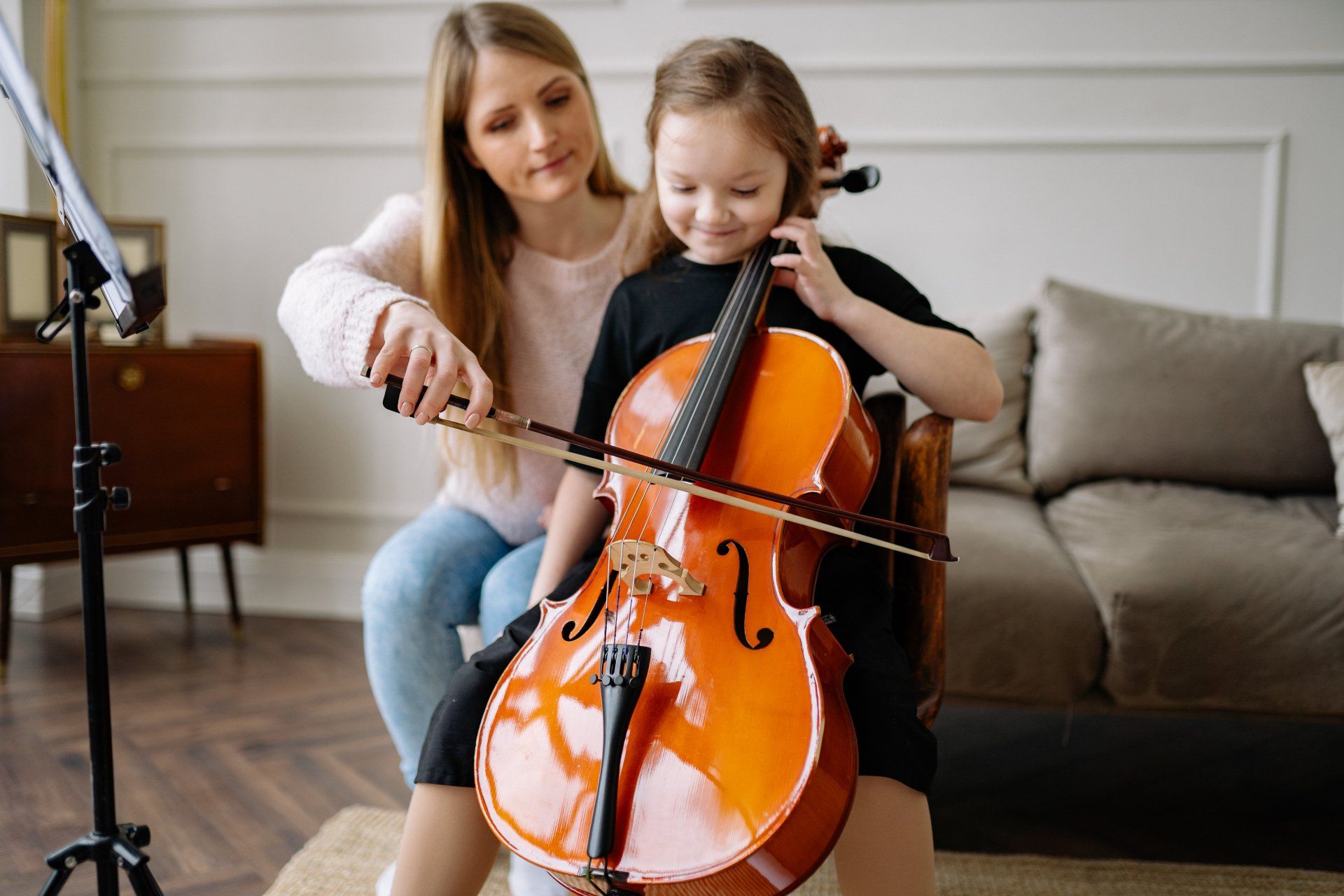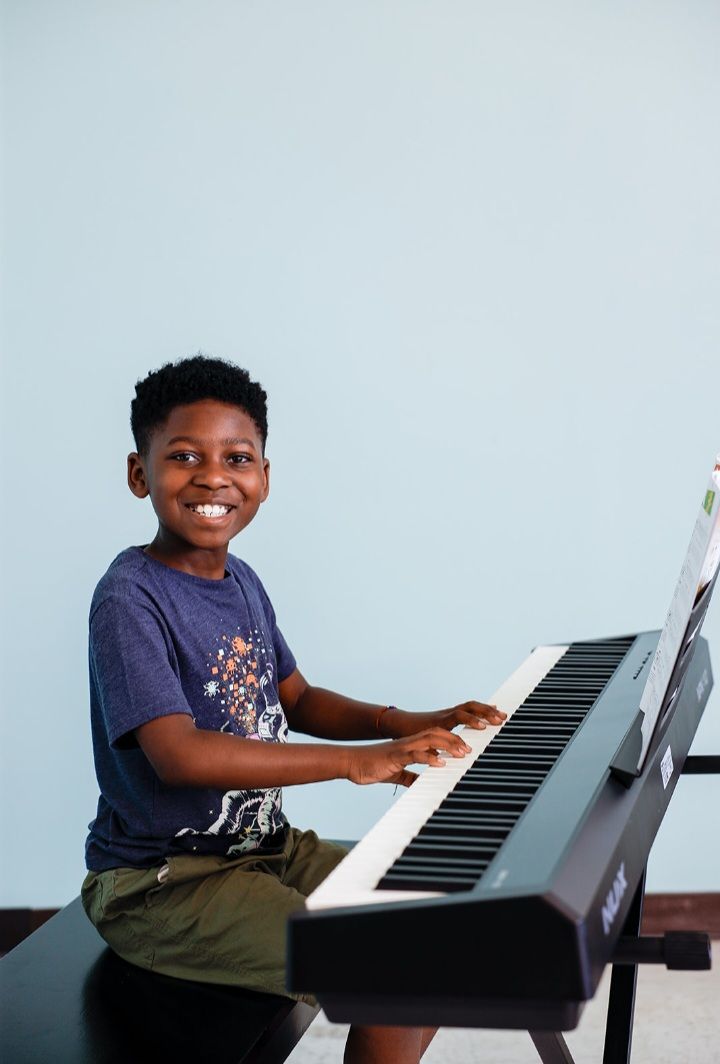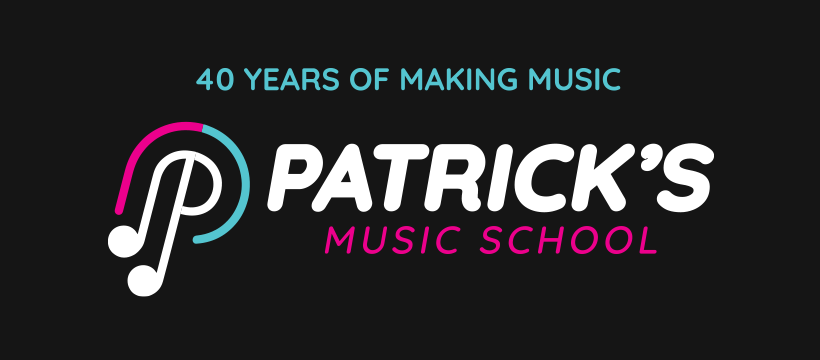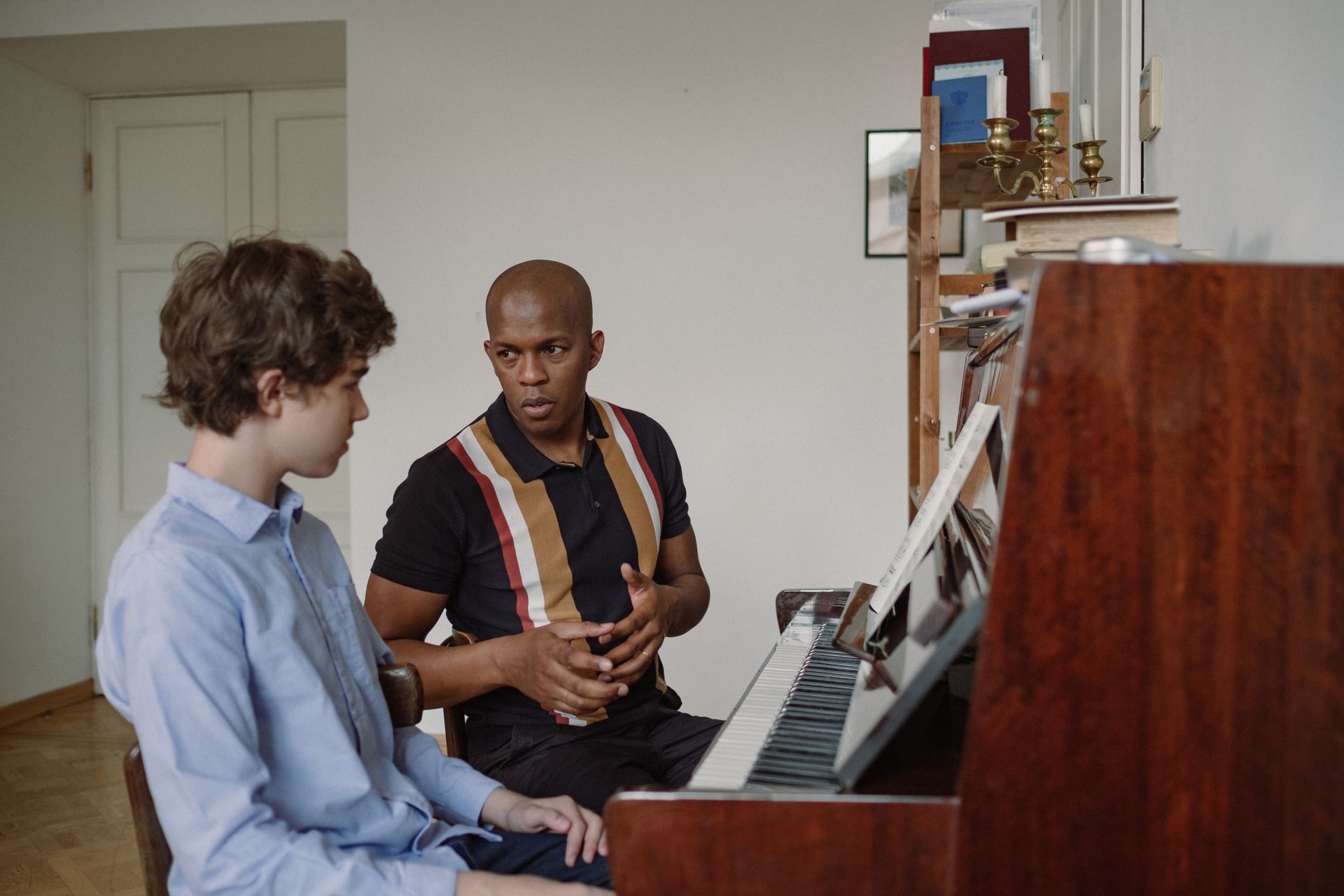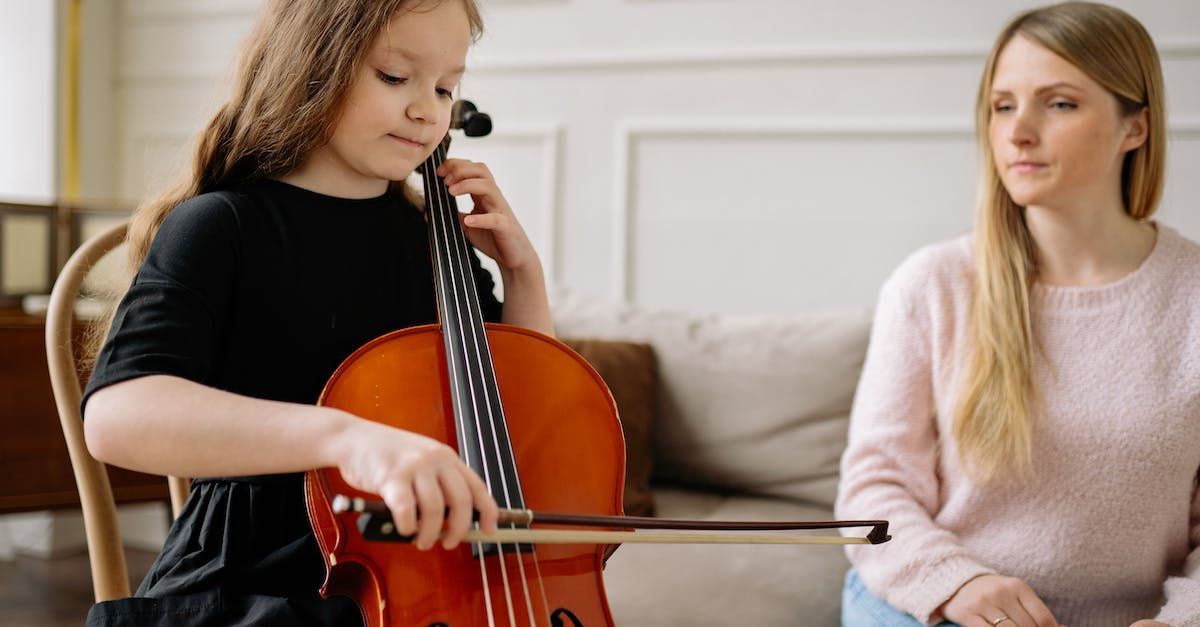Harmonizing Enthusiasm Strategies to Spark Your Childs Passion for Music Practice
From investing in suitable equipment to creating a supportive environment at home, we will discuss how to motivate your child to practice consistently and nurture a passion for music that will last a lifetime.
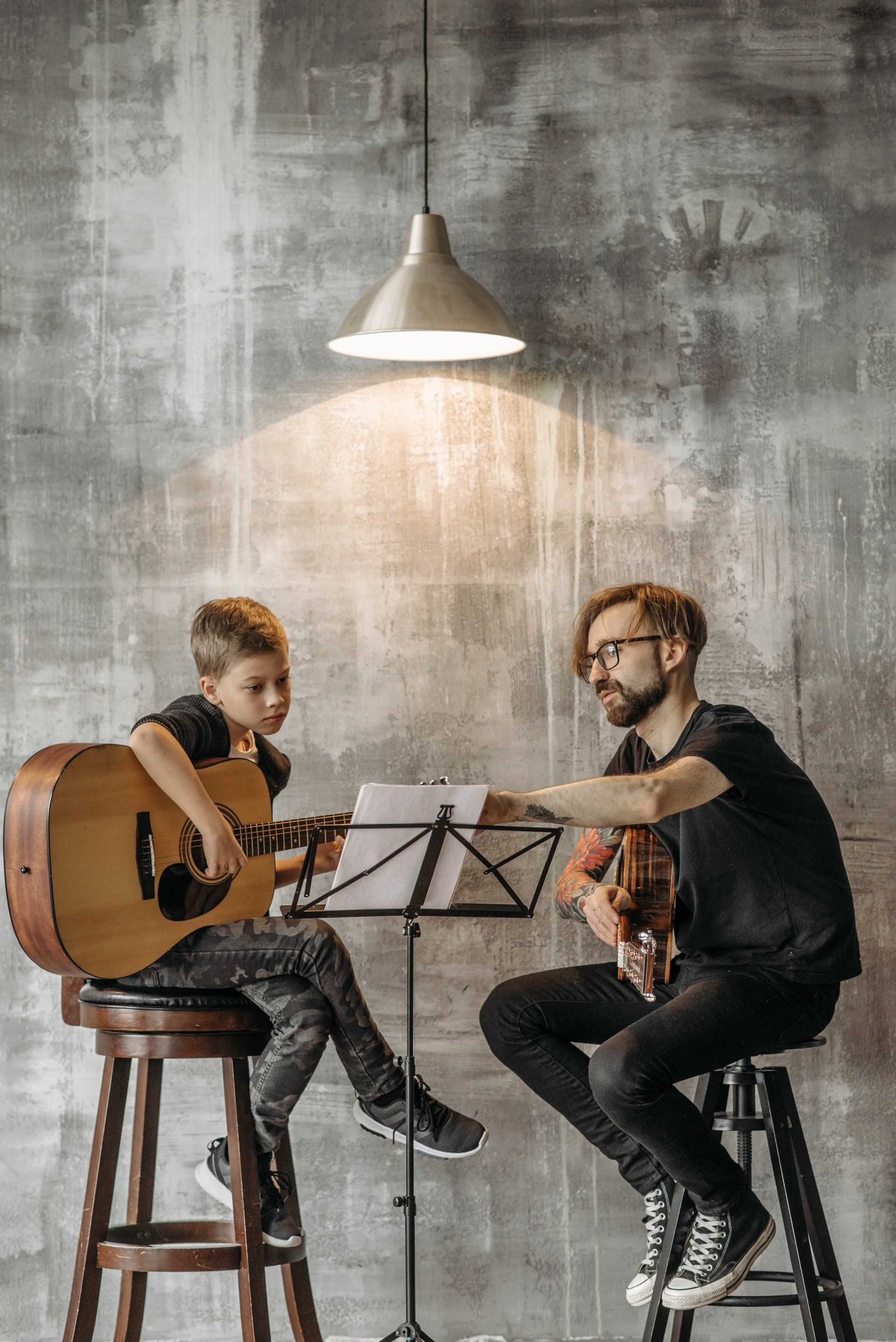
Understanding the Importance of Music Practice for Children
Understanding the importance of music practice for children involves recognizing the profound impact it has on their overall development and well-being.
Music practice not only stimulates a child's creativity but also fosters discipline through consistent practice routines. As children engage with music, they sharpen their cognitive skills, enhancing memory, attention span, and problem-solving abilities. Music facilitates emotional expression, allowing children to convey their feelings through melody and rhythm. This emotional outlet contributes to their overall well-being and mental health.
The Benefits of Music Practice for Child Development
Music practice plays a pivotal role in enhancing child development by fostering creativity, emotional expression, and technical skills that contribute to a well-rounded individual.
Engaging in music education from a young age has been shown to boost cognitive abilities, improving memory, attention span, and pattern recognition. This cognitive stimulation not only aids in academic performance but also enhances problem-solving skills and critical thinking.
Furthermore, music education helps children develop emotional intelligence by encouraging self-expression, empathy, and understanding of emotions. These emotional skills are crucial for successful social interactions, building relationships, and navigating complex emotional situations."
Setting the Foundation for a Love of Music
Setting the foundation for a love of music in children involves creating a nurturing environment that encourages exploration, play, and engagement with musical instruments.
One of the key strategies for igniting a passion for music in young minds is to make the learning process fun and interactive. Encouraging children to play with musical instruments from a young age helps them develop a sense of curiosity and discovery. Play is a powerful tool for learning, allowing kids to experiment, improvise, and learn through trial and error.
Introducing Your Child to the World of Music
Introducing your child to the world of music can be a transformative experience that ignites their creativity, passion, and appreciation for the art form.
When introducing young ones to music, exposure to diverse musical genres is key to broadening their musical horizons. Encourage them to explore various instruments to find one that resonates with them. This can help them develop a deeper connection with music and foster their artistic expression.
Additionally, parental involvement plays a crucial role in nurturing a child's love for music. Attend concerts, music classes, or even have jam sessions at home to spark their interest.
Remember to create a nurturing environment that encourages creativity and experimentation. Celebrate their musical milestones, no matter how small, to boost their confidence and keep their passion for music alive.
Investing in Suitable Equipment and Resources
Investing in suitable equipment and resources is essential to facilitate a conducive environment for music practice and production, enabling children to explore their creativity and technical skills.
From quality instruments to reliable recording software and studio monitors, having the right tools can make a significant difference in a young musician's journey. Ensuring that the equipment meets their specific needs and skill level is crucial for a seamless learning process.
Whether it's a beginner keyboard or a professional-grade microphone, each piece plays a vital role in honing their craft. Incorporating educational software and digital audio workstations (DAWs) can broaden their understanding of music theory and production techniques.
Encouraging and Supporting Your Child's Musical Journey
Encouraging and supporting your child's musical journey involves fostering a nurturing environment that celebrates their progress, creativity, and passion for music.
Parents play a crucial role in shaping their child's musical development, from the initial curiosity to reaching advanced levels of proficiency. By offering consistent encouragement and acknowledging their efforts, parents can instill a sense of confidence and motivation in their young musicians.
Positive reinforcement is key in building a supportive foundation for musical growth, whether through celebrating small achievements, attending performances, or simply listening attentively during practice sessions.
Collaborating closely with music teachers can further enhance a child's learning experience, as teachers offer guidance, expertise, and structured lessons to help channel the student's passion for music into tangible skills and artistic expression.
Emphasizing the Fun and Enjoyment of Music Practice
Emphasizing the fun and enjoyment of music practice is crucial in fostering a positive learning experience that sparks creativity while minimizing distractions.
Key to creating an engaging practice environment for children is to incorporate elements of imaginative play into their routine. This could involve pretending to be characters in a musical story or using visual aids like colorful props.
Encouraging creativity through activities such as improvisation or composition exercises can make practice sessions more interactive and personalized, allowing children to express themselves through music in a meaningful way.
Setting Achievable Goals and Celebrating Milestones
Setting achievable goals and celebrating milestones are essential strategies to motivate and reward children for their progress and dedication to music practice.
By establishing specific objectives, children can focus their efforts effectively, breaking down larger goals into manageable tasks. Incorporating measurable elements allows for tracking progress, enabling kids to see how far they've come and what still needs improvement.
Ensuring that the goals set are achievable fosters a sense of accomplishment and boosts confidence. Relevance in goal-setting is key, aligning objectives with the child's musical aspirations and interests.
Creating time-bound goals adds a sense of urgency and commitment, encouraging consistent practice. Regular feedback from parents on the child's progress helps in identifying areas for improvement and celebrating even small achievements can greatly enhance motivation levels.
Exploring Different Music Styles and Genres
Exploring different music styles and genres can broaden a child's musical horizons, inspire creativity, and foster collaboration with peers.
Encouraging children to delve into diverse music genres beyond what they are accustomed to opens up a world of new sounds and rhythms waiting to be discovered. This exploration not only enhances their musical abilities but also cultivates collaboration skills as they may find common ground with others who appreciate different genres. By immersing themselves in various musical cultures, children develop a deeper cultural appreciation and understanding of the rich tapestry of music that exists around the world.
Creating a Supportive Environment at Home
Creating a supportive environment at home is crucial in fostering a child's musical passion, encouraging involvement, creativity, and a sense of belonging in the musical journey.
Parents play a vital role in this process by demonstrating enthusiasm for music and actively engaging with their child's musical interests. Encouraging open communication and creating a safe space where children feel comfortable experimenting with different instruments or styles can ignite their curiosity and love for music.
Setting up a dedicated music corner or area in the home, stocked with age-appropriate instruments and resources, can further enhance a child's musical exploration. Incorporating regular family music sessions where everyone participates can strengthen bonds and create lasting memories centered around music.
Connecting with Passionate Music Teachers and Communities
Connecting with passionate music teachers and communities can enrich a child's musical journey, providing mentorship, support, and collaborative opportunities in the realm of music.
By engaging with dedicated music instructors, children can benefit from personalized guidance catering to their unique learning styles and goals. These teachers offer structured lessons, constructive feedback, and encouragement, promoting skill development and confidence.
Peer collaboration within musical communities allows young learners to interact with like-minded individuals, fostering creativity, teamwork, and a sense of camaraderie. Through shared experiences, students can explore diverse musical genres, broaden their perspectives, and find inspiration from their peers.
Community events such as concerts, workshops, and recitals create exciting platforms for children to showcase their talents, gain performance experience, and receive recognition for their hard work and dedication. These events also encourage social interaction, cultural appreciation, and a deeper connection to the music world.
Incorporating Music Theory, Composition, and Performance Opportunities
Incorporating music theory, composition, and performance opportunities into a child's musical education can deepen their understanding, enhance creativity, and prepare them for diverse musical experiences.
Understanding music theory serves as the building blocks of musical knowledge, providing a framework for students to grasp the language and structure of music. By diving into elements like rhythm, harmony, and melody, children develop a strong foundation to express themselves creatively through music.
Engaging in composition exercises allows young musicians to explore their unique musical voice, experiment with different styles, and learn to structure their ideas into cohesive pieces. Through composing, children cultivate their imagination, refine their listening skills, and gain a deeper appreciation for the creative process.
Performance opportunities offer children the chance to showcase their talents, build confidence, and receive feedback from audiences. By presenting their musical skills in public settings, kids develop stage presence, teamwork, and resilience, vital qualities that extend beyond the realm of music.
Motivating Your Child to Practice Consistently
Motivating your child to practice consistently involves creating engaging and rewarding practice sessions that instill a sense of accomplishment, progress, and enjoyment in their musical endeavors.
One effective strategy is to set achievable goals with your child, breaking down larger milestones into smaller, manageable tasks. By accomplishing these mini-goals, your child can experience a sense of progress and success, boosting their motivation to continue practicing. Providing specific and positive feedback can reinforce their efforts and build their confidence in their musical abilities. Incorporating short breaks and varying practice activities can help maintain their interest and prevent burnout.
Making Practice Sessions Engaging and Rewarding
Making practice sessions engaging and rewarding is key to sustaining a child's interest, creativity, and motivation in their musical journey.
One effective way to enhance the interactive aspect of music practice is by incorporating gamification elements. Games are a fun and engaging method to motivate children during their learning process. Whether it's setting up musical challenges, creating rewards for accomplishments, or turning practice into a friendly competition, gamification can transform dull routines into exciting adventures.
Integrating creativity exercises such as improvisation sessions or encouraging musical composition allows children to explore their artistic abilities and express themselves freely through music. This not only adds an element of fun but also nurtures their creative thinking and musicality."
Encouraging Regular Practice and Recognizing Effort
Encouraging regular practice and recognizing a child's effort are vital components in fostering a disciplined and rewarding approach to music education.
Establishing consistent practice routines helps children build a sense of responsibility and commitment towards their musical development. By following a set schedule for practice, young musicians learn valuable time management skills and gradually enhance their abilities.
Positive reinforcement plays a crucial role in shaping their motivation and mindset, instilling a sense of pride and accomplishment. Acknowledging a child's dedication and progress boosts their confidence levels and encourages them to strive for excellence. Providing praise, encouragement, and constructive feedback creates a nurturing environment that fosters a love for music and continuous improvement.
Sharing and Showcasing Your Child's Musical Progress
Sharing and showcasing your child's musical progress can boost their confidence, foster a sense of accomplishment, and encourage further growth and collaboration in musical pursuits.
By sharing your child's performances and achievements, you are not only acknowledging their hard work but also creating a positive and supportive environment that fuels their passion for music.
Public showcases provide valuable opportunities for young musicians to demonstrate their talent, receive feedback, and gain experience in performing before an audience. Moreover, collaborative projects offer a chance for children to work with their peers, learn new skills, and develop a sense of teamwork.
Facilitating Collaborative Music Experiences with Peers
Facilitating collaborative music experiences with peers can enhance a child's motivation, enjoyment, and sense of camaraderie in their musical journey.
Encouraging children to engage in group performances and ensemble playing not only helps them develop their musical skills but also fosters a sense of belonging within a supportive community of musicians.
Through peer collaboration in music projects, children learn valuable lessons in cooperation, communication, and teamwork, building essential social skills that are transferable to various aspects of their lives.
Shared musical experiences allow children to explore diverse genres, instruments, and styles, broadening their musical appreciation and understanding.
Nurturing a Lifelong Passion for Music
Nurturing a lifelong passion for music requires providing a positive and enriching experience that encourages exploration, enjoyment, and personal fulfillment in musical pursuits.
One of the key strategies in fostering a deep love for music in children is to make music a regular part of their daily routine. This can be achieved by incorporating music into activities such as bedtime routines, playtime, or car rides. By making music a natural and integrated part of their day, children are more likely to form a strong connection with it.
Another effective way to maintain a child's passion for music is by exposing them to a wide variety of musical genres and styles. This exposure not only broadens their musical horizons but also helps them discover what resonates with them the most. This can be done through attending concerts, listening to different radio stations, or exploring music streaming services.
Creating a Positive Musical Learning Experience
Creating a positive musical learning experience is fundamental in nurturing a child's creativity, imagination, and joy in the realm of music.
One key element in fostering this positive environment is providing opportunities for experiential learning, allowing children to actively engage with music through hands-on activities, interactive games, and group projects. Through experiential learning, children not only develop a deeper understanding of musical concepts but also cultivate a sense of ownership and pride in their musical accomplishments.
Encouraging creative exploration further enhances a child's musical journey by inspiring them to think outside the box, experiment with different musical styles, and find their unique musical voice. By embracing a spirit of curiosity and openness to new ideas, children can unlock their full creative potential and discover the endless possibilities that music has to offer.
Knowing When to Provide Support and When to Step Back
Knowing when to provide support and when to step back in your child's musical journey is essential to strike a balance between guidance, independence, and personal growth.
In terms of parental support in music practice, offering encouragement and constructive feedback can significantly boost a child's confidence and motivation. However, fostering independence is equally crucial to help them develop their own musical style and expression. It's important to create a supportive environment that allows your child to explore their creativity freely while also providing gentle guidance when needed. By striking this delicate balance, you can give the power to your child to become more self-reliant, resilient, and innovative in their musical pursuits.
Encouraging Exploration of Different Instruments and Music Styles
Encouraging exploration of different instruments and music styles can broaden a child's musical horizons, stimulate creativity, and foster a diverse appreciation for music.
Children who are exposed to a variety of instruments, from traditional ones like the piano and violin to more unconventional choices such as the ukulele or djembe, are more likely to develop a keen ear for music and a deeper understanding of musical structures and dynamics.
This exposure not only enhances their listening skills but also opens up avenues for self-expression through different musical languages and rhythms.
Introducing children to various music genres like classical, jazz, pop, and world music can inspire them to explore their own musical preferences and find their unique voice in the vast landscape of sound.
Ensuring Music Practice Remains Enjoyable and Fulfilling
Ensuring music practice remains enjoyable and fulfilling is essential in overcoming distractions and obstacles that may hinder a child's progress and enthusiasm in learning music.
One effective strategy for maintaining a positive music practice routine is to establish a consistent schedule that aligns with the individual's peak concentration times, ensuring that practice sessions are both effective and engaging. It can be beneficial to set clear, achievable goals tailored to the student's skill level and interests, fostering a sense of accomplishment and motivation. Introducing variety into practice sessions, such as incorporating different genres or styles of music, can help prevent monotony and reignite enthusiasm for learning. Addressing technical challenges by breaking them down into smaller, manageable tasks can make practice more manageable and rewarding.
Frequently Asked Questions
What is the importance of harmonizing enthusiasm in sparking my child's passion for music practice?
Harmonizing enthusiasm means finding ways to align your child's interests and motivations with their music practice, which can greatly enhance their enjoyment and dedication to learning music.
How can I identify my child's specific interests and motivations for learning music?
Observe your child's behavior and listen to their conversations to uncover their interests and motivations. You can also ask them directly and involve them in the decision-making process for their music education.
What are some strategies for incorporating my child's interests into their music practice?
You can use their favorite songs, genres, or instruments in their practice routine. You can also encourage them to create their own music based on their interests and provide opportunities for them to perform or share their music with others.
How can I maintain my child's enthusiasm for music practice?
It is important to constantly communicate with your child and listen to their feedback. Incorporating new challenges and goals, as well as providing positive reinforcement and recognition, can also help sustain their enthusiasm.
What do I do if my child shows little interest in music practice?
First, try to understand why your child may be lacking enthusiasm. It could be due to a lack of connection with their current music lessons or feeling overwhelmed. Consider trying a different approach or involving a music teacher or mentor who can inspire and motivate your child.
Are there any potential drawbacks to harmonizing enthusiasm in music practice?
While harmonizing enthusiasm can greatly benefit your child's passion for music, it is important to also maintain a balance and not make it the sole focus. It is also crucial to respect your child's autonomy and not force them to pursue a specific path if it does not align with their interests.
